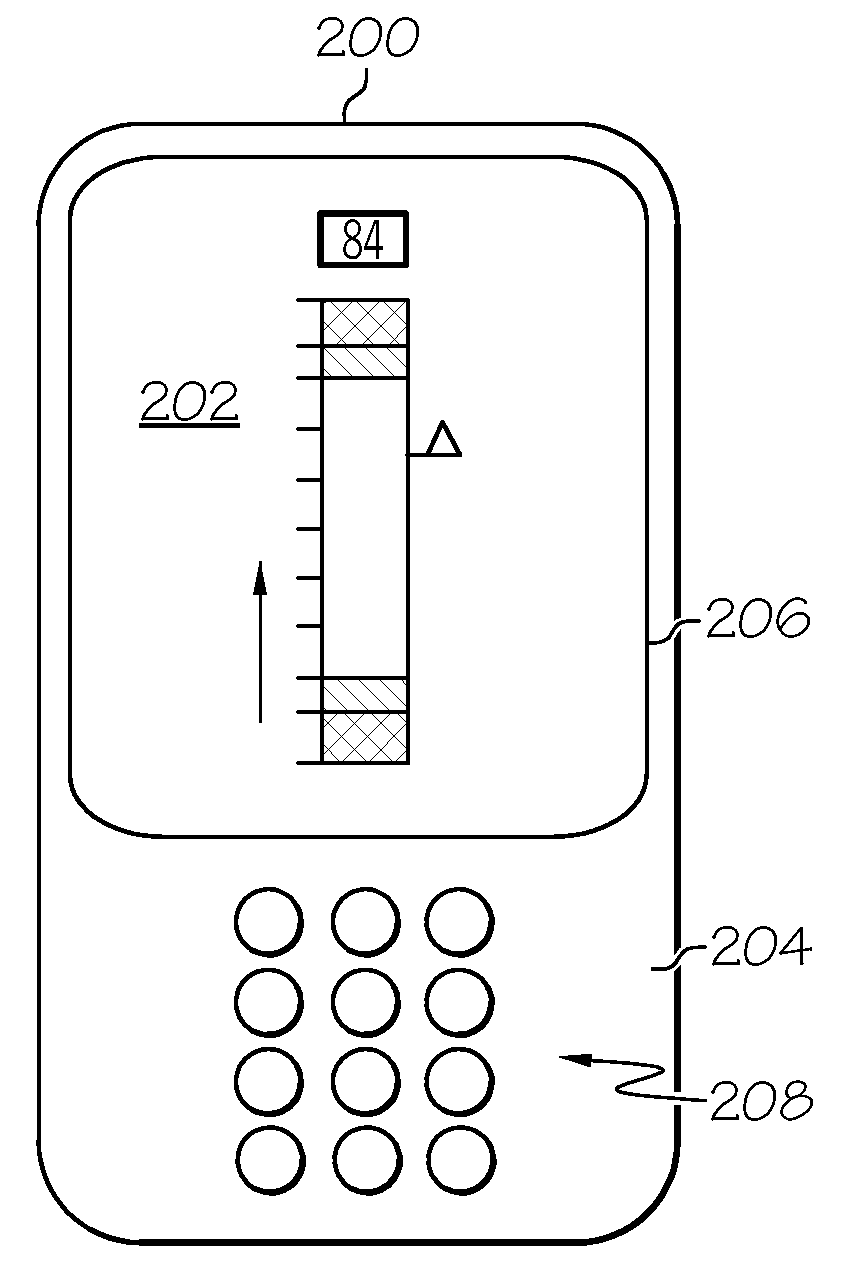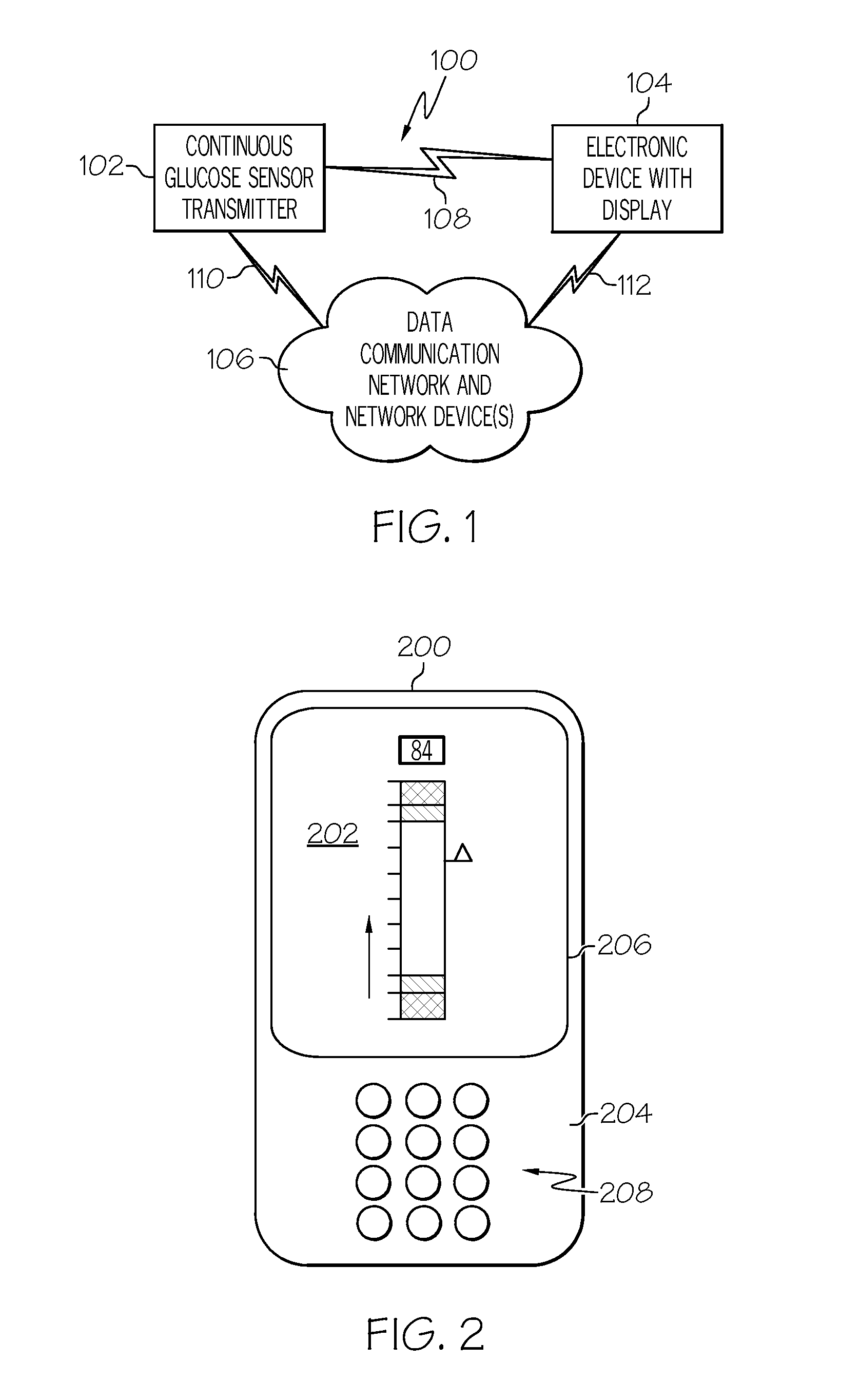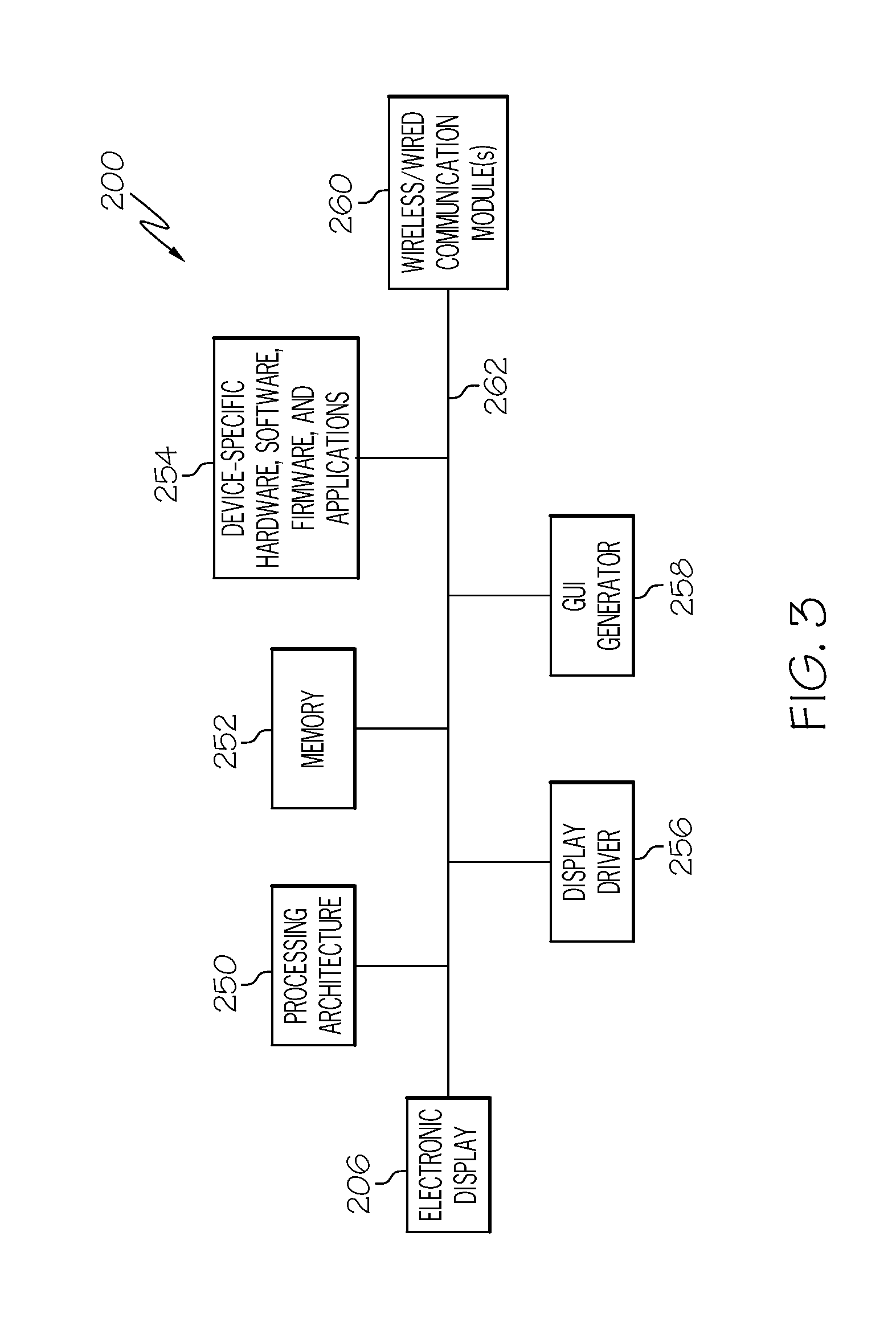Graphical display for physiological patient data
a graphical display and patient technology, applied in the field of graphical user interfaces, can solve the problems of limited in the amount of additional information provided, graphical displays may not be intuitive and easy to read,
- Summary
- Abstract
- Description
- Claims
- Application Information
AI Technical Summary
Benefits of technology
Problems solved by technology
Method used
Image
Examples
first embodiment
[0037]An embodiment of electronic device 200 is suitably configured to render on electronic display 206 a graphical element that represents an intuitive graphical display of physiological patient data (e.g., BG measurement values), regardless of its form factor, native GUI capabilities, display resolution, and graphics rendering capabilities. In this regard, FIGS. 4-7 illustrate an intuitive graphical display 300 of physiological patient data in different states. The values depicted in the figures represent typical values, and they are not intended to limit or otherwise restrict the embodiments described here. In this regard, typical BG values can range from about 20 mg / dl to over 600 mg / dl. FIG. 4 depicts intuitive graphical display 300 for a normal BG level that is increasing at a relatively high rate of change, FIG. 5 depicts intuitive graphical display 300 for a high BG level that is increasing at a relatively low rate of change, FIG. 6 depicts intuitive graphical display 300 fo...
second embodiment
[0054]FIGS. 8-10 illustrate an intuitive graphical display 400 of physiological patient data in different states. Intuitive graphical display 400 includes a number of features and elements that were described above for intuitive graphical display 300. For the sake of brevity, shared features, elements, and aspects will not be redundantly described here in the context of intuitive graphical display 400. FIG. 8 depicts intuitive graphical display 400 for a normal BG level that is increasing at a relatively low rate of change, FIG. 9 depicts intuitive graphical display 400 for a high BG level that is decreasing at a relatively high rate of change, and FIG. 10 depicts intuitive graphical display 400 for a very low BG level that is increasing at a relatively intermediate rate of change.
[0055]In contrast to intuitive graphical display 300, which utilizes a separate and distinct rate of change pointer 310, intuitive graphical display 400 integrates a rate of change pointer into its measure...
third embodiment
[0058]FIGS. 11-13 illustrate an intuitive graphical display 500 of physiological patient data in different states. Intuitive graphical display 500 includes a number of features and elements that were described above for intuitive graphical display 300 and / or for intuitive graphical display 400. For the sake of brevity, shared features, elements, and aspects will not be redundantly described here in the context of intuitive graphical display 500. FIG. 11 depicts intuitive graphical display 500 for a normal BG level that is increasing, FIG. 12 depicts intuitive graphical display 500 for a high BG level that is decreasing at a relatively moderate rate of change, and FIG. 13 depicts intuitive graphical display 500 for a very low BG level that is increasing at a relatively high rate of change.
[0059]Intuitive graphical display 500 is similar to intuitive graphical display 400, however, intuitive graphical display 500 employs a rate of change pointer 502 that is rendered at different angle...
PUM
 Login to View More
Login to View More Abstract
Description
Claims
Application Information
 Login to View More
Login to View More - R&D
- Intellectual Property
- Life Sciences
- Materials
- Tech Scout
- Unparalleled Data Quality
- Higher Quality Content
- 60% Fewer Hallucinations
Browse by: Latest US Patents, China's latest patents, Technical Efficacy Thesaurus, Application Domain, Technology Topic, Popular Technical Reports.
© 2025 PatSnap. All rights reserved.Legal|Privacy policy|Modern Slavery Act Transparency Statement|Sitemap|About US| Contact US: help@patsnap.com



